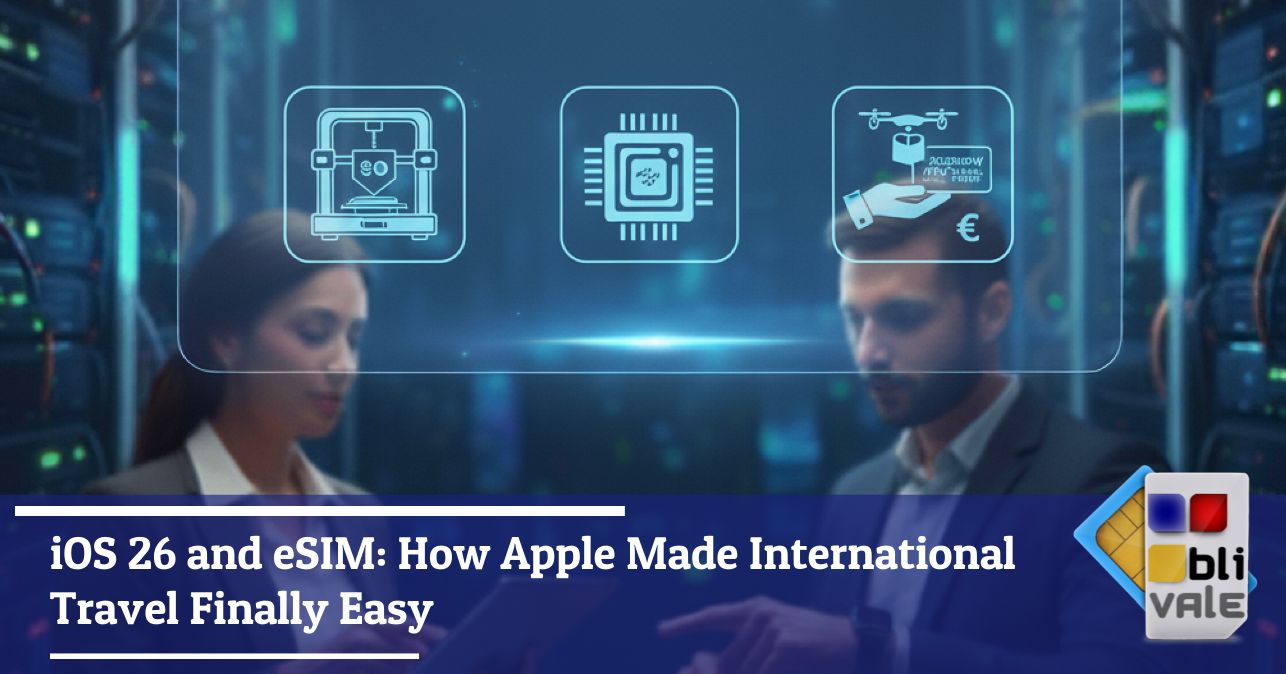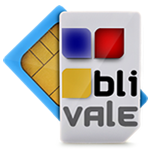The first week of November 2025 marks a turning point in the history of mobile connectivity. As the global eSIM market is poised to reach $1.8 billion by the end of the year, technological innovations are accelerating at an astonishing pace. From the introduction of automatic travel eSIM activation in iOS 26 to strategic partnerships between telecom giants, this week has brought developments that will radically simplify the lives of millions of travelers and businesses around the world.
Whether you're a frequent traveler, a digital nomad seeking maximum flexibility, or a company managing IoT devices globally, these changes directly affect you. Get ready to discover how technology is eliminating the barriers to international connectivity.
The 10 Key News of the Week
1. Apple iOS 26 Revolutionizes Travel with Automatic eSIM Activation
The real revolution for travelers has finally arrived. Apple introduced a feature with iOS 26 that will forever change the way we use eSIMs when traveling internationally. The operating system can now automatically detect when you cross a border and activate your preloaded travel eSIM, then automatically switch back to your home SIM upon your return.
This innovation completely eliminates the hassle of manually managing SIM profiles, making the connectivity experience so seamless it's virtually invisible. iOS 26 uses an intelligent combination of Siri, Calendar, Email, and location data to suggest switching to eSIM Travel up to 24 hours before departure.
Reference: ISPreview UK
2. eSIM.net Launches Global64: The First eSIM with Automatic iOS 26 Activation
Coinciding with the World Travel Market in London, eSIM.net announced Global64 , the first global eSIM to take full advantage of the new iOS 26 feature. This innovative eSIM offers connectivity in 64 countries with no roaming fees and no need to purchase separate SIMs for each destination.
"Global64 represents a major milestone for mobile connectivity," said Gerry O'Prey, CEO of eSIM.net. "For the first time, travelers can land in another country and their phone simply works—no SIM swapping, no configuration, no hassle."
Reference: PR Newswire
3. Travel eSIM Market to Reach $1.8 Billion by 2025
Juniper Research revealed that travel eSIM bundle revenue will reach $1.8 billion by the end of 2025, a staggering 85% growth from $989 million in 2024. Forecasts indicate the market will exceed $8.7 billion by 2030.
This explosive expansion is driven by the drastic reduction in barriers to entry thanks to Connectivity-as-a-Service platforms, which have made it easier for providers to launch travel eSIM offerings. Traditional operators are now facing unprecedented competition.
Reference: Telco Magazine
4. AT&T and Thales Launch Revolutionary eSIM Solution for IoT
A partnership that will define the future of the Internet of Things. AT&T and Thales have announced the launch of a new eSIM solution designed to help businesses remotely activate and manage IoT devices. Powered by Thales Adaptive Connect (TAC), the solution becomes an integral part of AT&T's global IoT offering.
Compliant with the GSMA SGP.32 standard, this solution allows companies to ship connected devices anywhere in the world with a single pre-integrated Thales eSIM, then remotely activate the correct local connectivity profile. With over 5.8 billion cellular IoT connections expected by 2030, this innovation comes at the perfect time.
Reference: IoT Now
5. Global SIM Card Market Towards $8.3 Billion by 2032
Allied Market Research forecasts the traditional SIM card market to reach $8.3 billion by 2032, growing at a CAGR of 5.9% from 2023 to 2032. Despite the rise of eSIMs, traditional SIMs maintain a strong foothold , particularly in emerging markets and specific industrial applications.
The proliferation of mobile connectivity remains the primary growth driver, with an ever-expanding global population and growing reliance on mobile devices for communication, entertainment, and productivity.
Reference: Newstrail
If you are thinking of taking a trip alone or with friends or for work, do not forget the importance of staying connected wherever you are. For unlimited Internet connection, contact BLIVALE where you can get unlimited Internet according to the destinations:
For unlimited plans like data BLIVALE guarantees free roaming anywhere in the world, no additional or hidden costs. Don't let the lack of connection stop you; get ready to explore the world with freedom and spontaneity.
6. iSIM Technology: The Integrated Future of IoT Connectivity
iSIM (integrated SIM) is emerging as the next evolution in IoT connectivity. Integrated directly into the device's processor , iSIM eliminates the need for separate hardware components, offering significant advantages in space savings, energy efficiency, and security.
Kaleido Intelligence forecasts suggest that the iSIM market will grow to 300 million units by 2027, representing 19% of all eSIM shipments. xSIM connections (iSIM and eSIM) are projected to grow at a CAGR of 63% from 2023 to 2028.
Reference: Cavli Wireless
7. AI-eSIM Convergence: Transforming North America's Digital Infrastructure
Artificial intelligence is revolutionizing the way we manage eSIMs. In North America, the convergence of eSIM technology and AI is redefining how consumers, businesses, and governments connect devices, manage networks, and scale digital services.
Telecom operators are reevaluating their models, with recent analysis highlighting how eSIM technology is helping mobile network operators recover roaming revenues and modernize cross-border digital access.
Reference: Coruzant
8. Low-Cost 5G Solutions Fuel Global Telecommunications Growth
The fifth generation of wireless technology is poised for a transformative era. With the emergence of low-cost solutions, 5G is democratizing advanced connectivity , unlocking unprecedented market opportunities, and driving substantial growth in global telecommunications.
Dell'Oro Group predicts that Open RAN will represent 5% to 10% of total RAN revenues by 2025, while Twimbit estimates the Open RAN market will reach $22.3 billion by 2030.
Riferimento: Financial Content Markets
9. Digital Nomads Are Ditching Traditional SIM Cards For Good
An entire generation of professionals is redefining connectivity. Digital nomads are abandoning physical SIM cards en masse in favor of eSIMs, which offer unparalleled flexibility and eliminate the hidden costs associated with constant country changes.
eSIM technology eliminates the need to swap physical SIM cards and makes it easier to subscribe to networks outside of your home country via QR codes. Experts predict a triple-digit percentage increase in the adoption of eSIM travel plans in Asia-Pacific.
Reference: Tamara Like Camera
10. Telecommunications 2025: Five Key Trends for 2026 According to Juniper Research
Juniper Research has identified the technologies and business models that will define the next phase of digital connectivity. Key trends include AI-driven customer interactions, converged MVNO-eSIM platforms, terahertz spectrum innovations, and multi-orbit satellite networks .
The Telecommunications-as-a-Service (TaaS) model is identified as a key driver of MVNO growth, with examples such as Nubank in Brazil, Revolut, and Klarna launching eSIM-supported MVNO services.
Reference: RCR Wireless
Conclusion: The Future of Connectivity is Already Here
The week of November 2–8, 2025, demonstrated that the connectivity revolution is no longer a future promise, but a tangible reality that is transforming the present . The seamless integration of hardware, software, and artificial intelligence is creating an ecosystem where connectivity becomes invisible, automatic, and universal.
For travelers, this means freedom from technical complexity and exorbitant roaming costs. For businesses, it represents the opportunity to manage millions of IoT devices with unprecedented simplicity. For telecom operators, it's a call to innovation and rapid adaptation.
This week's trend is clear: intelligent automation and deep integration between different technologies are eliminating the barriers that have limited our ability to connect freely for decades . With eSIMs becoming the de facto standard and iSIMs emerging as the next frontier, we are witnessing the birth of a truly digitally borderless world.









